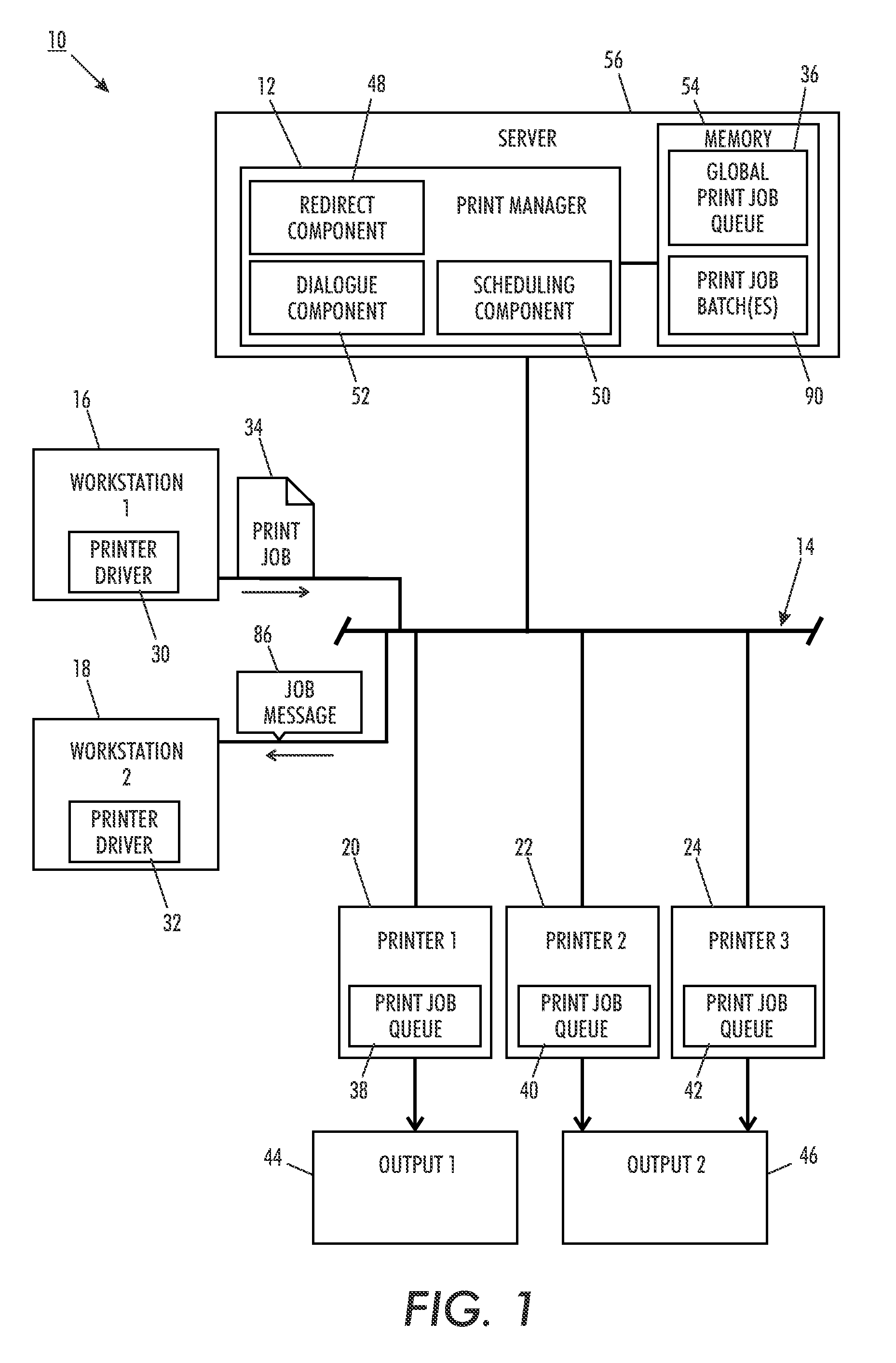Energy-aware print job management
a technology for managing jobs and energy, applied in the direction of digital output to print units, multi-programming arrangements, instruments, etc., can solve the problems of significant difference in power consumption between stand-by and ready modes, significant energy consumption, and higher power consumption
- Summary
- Abstract
- Description
- Claims
- Application Information
AI Technical Summary
Benefits of technology
Problems solved by technology
Method used
Image
Examples
Embodiment Construction
[0018]The term “device” or “printer,” as used herein, broadly encompasses various printers, copiers, bookmaking machines, or multifunction machines, xerographic or otherwise, unless otherwise defined, which performs a print job rendering function for any purpose.
[0019]A “network printing system,” as used herein incorporates a plurality of shared devices, which are accessible to one or more workstations, such as personal computers.
[0020]The term “print medium” generally refers to a physical sheet of paper, plastic, or other suitable physical print media substrate for images, whether precut or web fed.
[0021]A “print job” generally includes a “printing object,” which consists of one or more document images in a suitable format that is recognized by the printer, e.g., Postscript, together with a “job ticket,” which provides information about the print job that will be used to control how the job is processed. A typical processed print job may comprise a set of related sheets printed as ...
PUM
 Login to View More
Login to View More Abstract
Description
Claims
Application Information
 Login to View More
Login to View More - R&D
- Intellectual Property
- Life Sciences
- Materials
- Tech Scout
- Unparalleled Data Quality
- Higher Quality Content
- 60% Fewer Hallucinations
Browse by: Latest US Patents, China's latest patents, Technical Efficacy Thesaurus, Application Domain, Technology Topic, Popular Technical Reports.
© 2025 PatSnap. All rights reserved.Legal|Privacy policy|Modern Slavery Act Transparency Statement|Sitemap|About US| Contact US: help@patsnap.com



